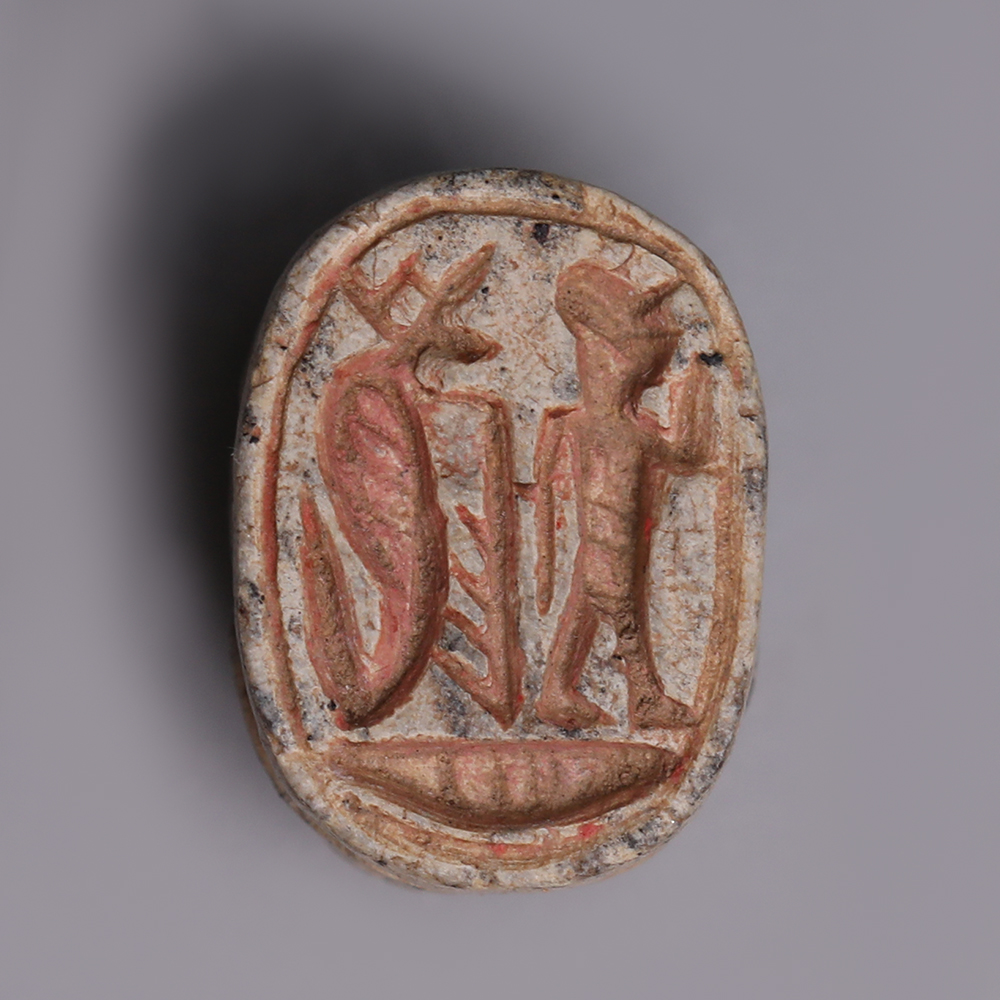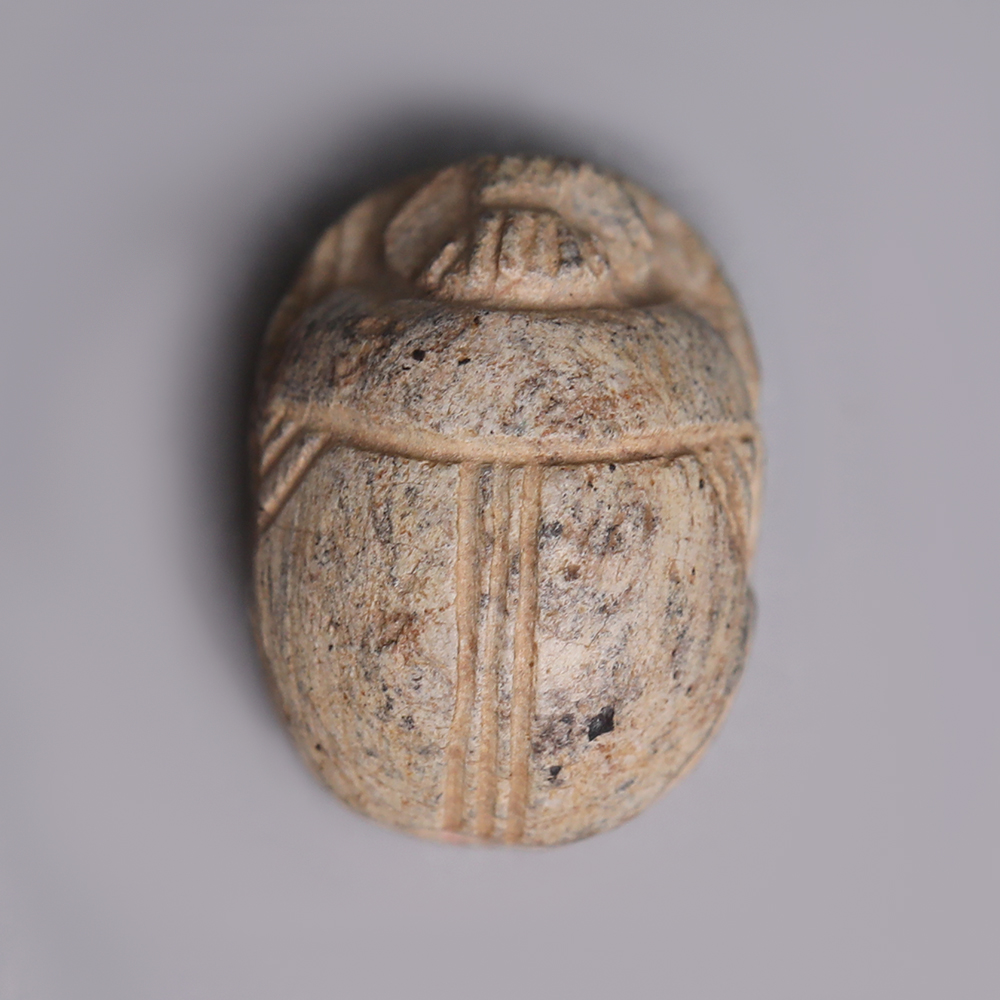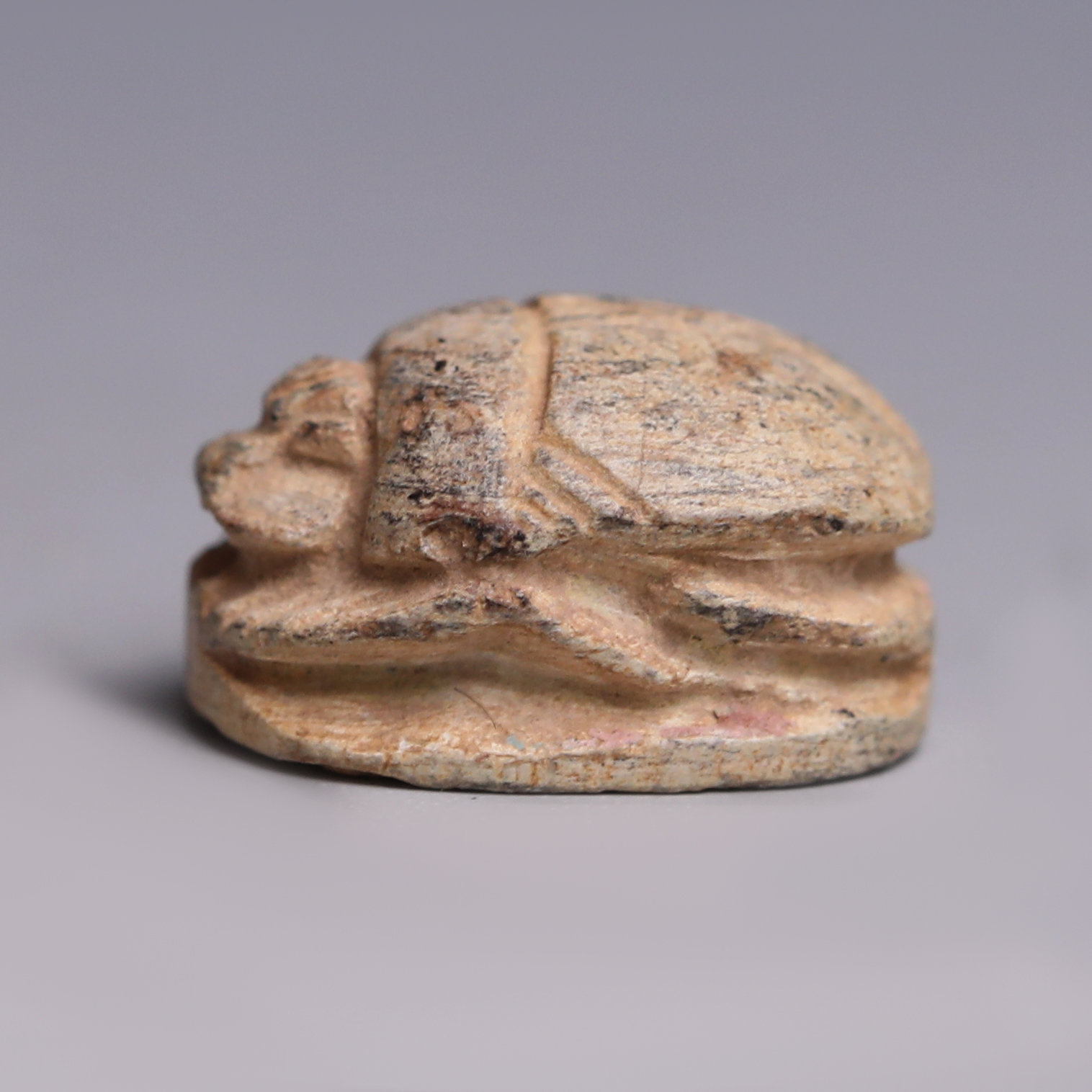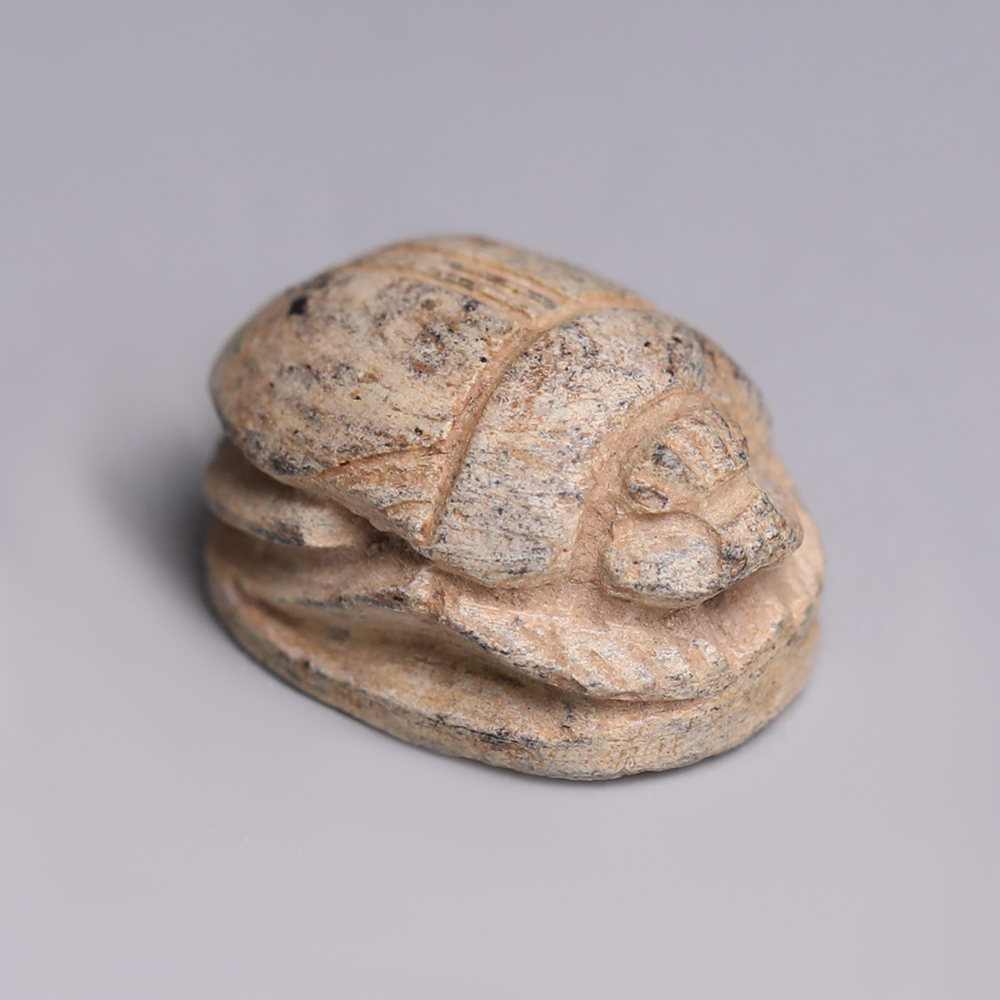The name Harpokrates (Ἁρποκράτης) was the Ancient Greek adaptation of the Egyptian Har-pa-khered or Heru-pa-khered, which translates to ‘Horus the Child’. Child-gods were the child member of a divine triad composed of a father, a mother and a child, and functioned as guarantors of fertility, eternal renewal and continuity of royal succession. Their cult grew in popularity during the Third Intermediate Period and became prominent in the Ptolemaic and Roman Periods. Harpokrates is widely accepted as the son of Isis and Osiris/Serapis. His most common representation sees him as a naked child, holding his finger to his mouth. While the Egyptian interpreted such gesture as symbolising childhood, the Greek understood it as a reference to silence, introducing Harpokrates as the god of silence and confidentiality in the Hellenistic religion.
To find out more about Ancient Egyptian amulets please see our relevant blog post: Egyptian Amulets and their Meanings.



